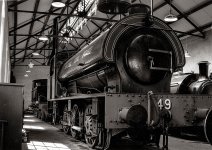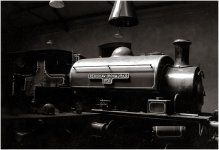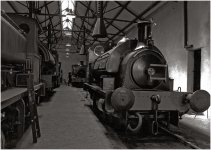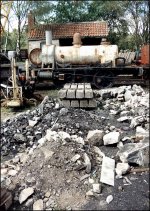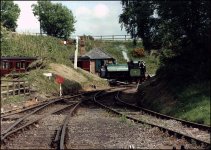These are pictures (I dislike the word 'images' that reminds me some heathen religion) of the Tanfield Railway, which is arguably the oldest railway in the world which started running on wooden rails around 1715 with horse drawn wooden wagons taking coal to the River Tyne. Around the start of the 19thC the rails were replaced with iron and the horses used in part but now hauled by steam engines pulling the wagons by way of a rope. Later in the early part of the 19thC steam locomotives were used to do all the hard work.
Now only a fraction of it's original length (about 3 miles) and another section completely vanished it, is entirely run by volunteers keeping the heritage alive. The 3 B&W picture are inside the locomotive shed also the oldest in the world still used for it's original purpose (built 1859) and thanks to the Heritage Lottery fund, now totally restored.
Further down the line where an older spur ran over the Causey Arch which is the oldest railway bridge still standing but now only used by cycles and pedestrians. That will be my next set.
Now only a fraction of it's original length (about 3 miles) and another section completely vanished it, is entirely run by volunteers keeping the heritage alive. The 3 B&W picture are inside the locomotive shed also the oldest in the world still used for it's original purpose (built 1859) and thanks to the Heritage Lottery fund, now totally restored.
Further down the line where an older spur ran over the Causey Arch which is the oldest railway bridge still standing but now only used by cycles and pedestrians. That will be my next set.

